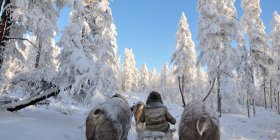Washington: Scientists have moved closer to being able to stop a huge asteroid colliding with Earth and potentially wiping out human life.
This fast-spinning asteroid will pass close by earth in the year 2880 and an Armageddon-style blasting it into pieces may not be a good idea.
Researchers have found that the asteroid, named “1950 DA”, is a loose agglomeration of particles that cling together much as moon dust collects on astronauts’ spacesuits.
According to planetary scientists, any mission to divert an asteroid on a collision course with earth would need to take these newfound cohesive forces into account.
“You would want to avoid interacting with the asteroid directly,” said Ben Rozitis, a planetary scientist at University of Tennessee in Knoxville.
This means that gently nudging an asteroid onto a new trajectory is potentially a safer option.
At one point, the odds of its hitting the earth were estimated to be as high as 1 in 300 but more recent observations have lowered that risk to 1 in 4,000.
Researchers have suspected that undetected cohesive forces help to hold some asteroids together — especially “rubble-pile” asteroids that are agglomerations of dirt and rock.
If “1950 DA” is a rubble-pile asteroid then something more than gravitational attraction must be holding it together as it spins around.
Fresh calculations suggest it could spin no faster than about once every 2.2 hours if it were held together by gravity alone, but the asteroid goes faster than that, once every 2.1 hours.
The researchers calculated that cohesive forces, exerting no more pressure than a coin resting in the palm of a hand, must be at work.
“Understanding such forces could be important for NASA’s plan to drag an asteroid into lunar orbit to study it, or for commercial companies that claim they plan to mine asteroids,” added Daniel Scheeres, an aerospace engineer at the University of Colorado Boulder.
Bong Wie, an aerospace engineer at Iowa State University in Ames, hopes that “an asteroid on a collision course with the earth will not be spinning rapidly and it will not be a rubble-pile asteroid”, Nature reported.






Leave a reply